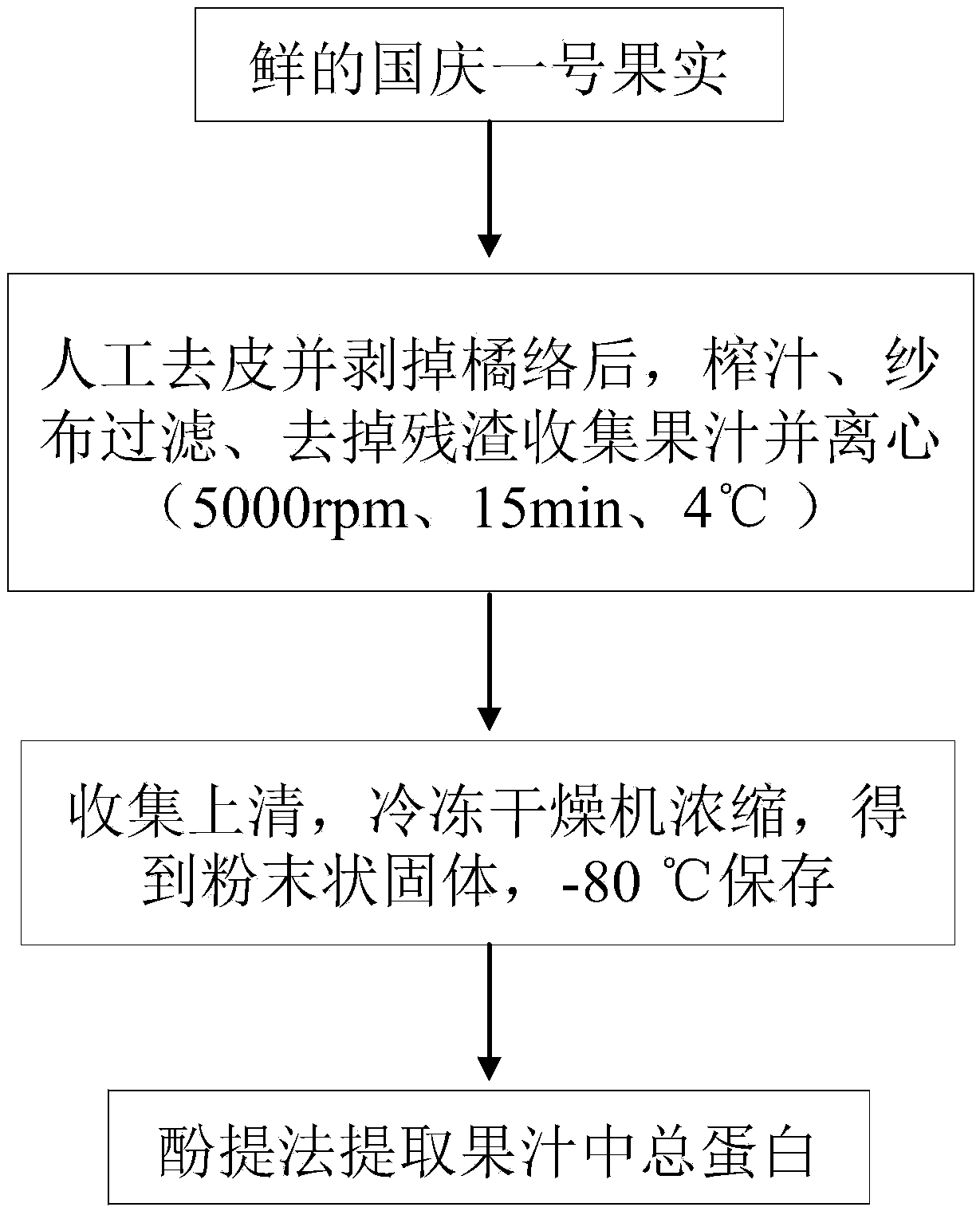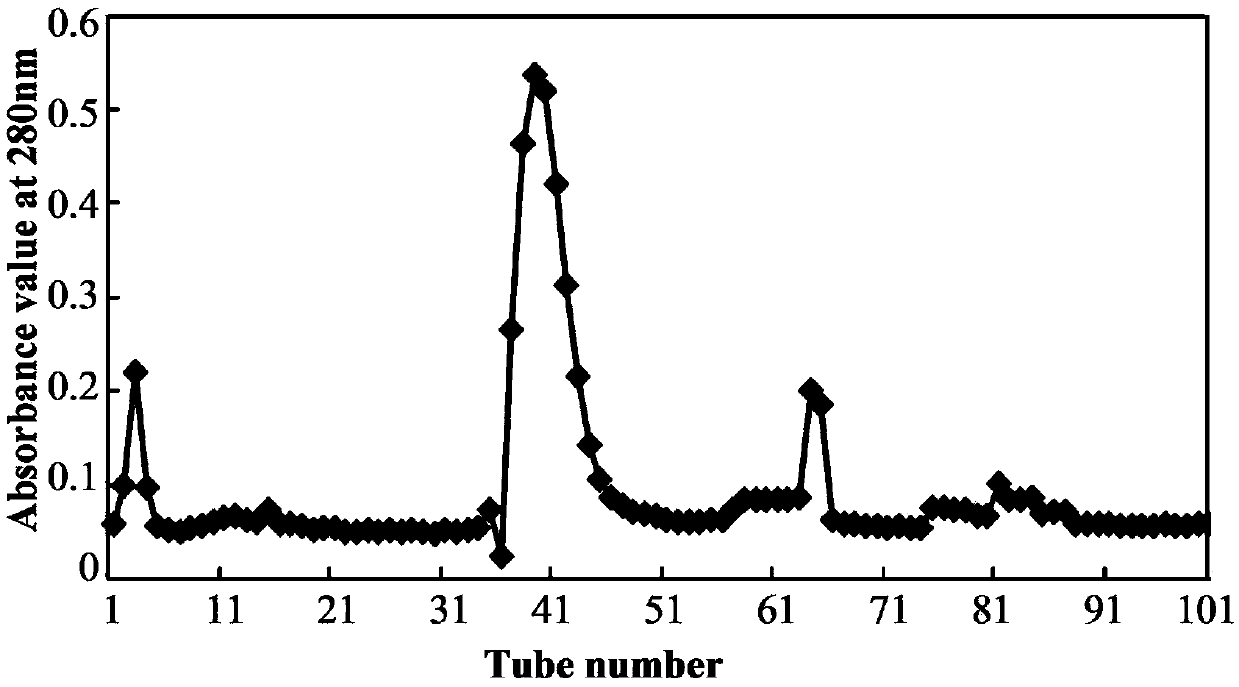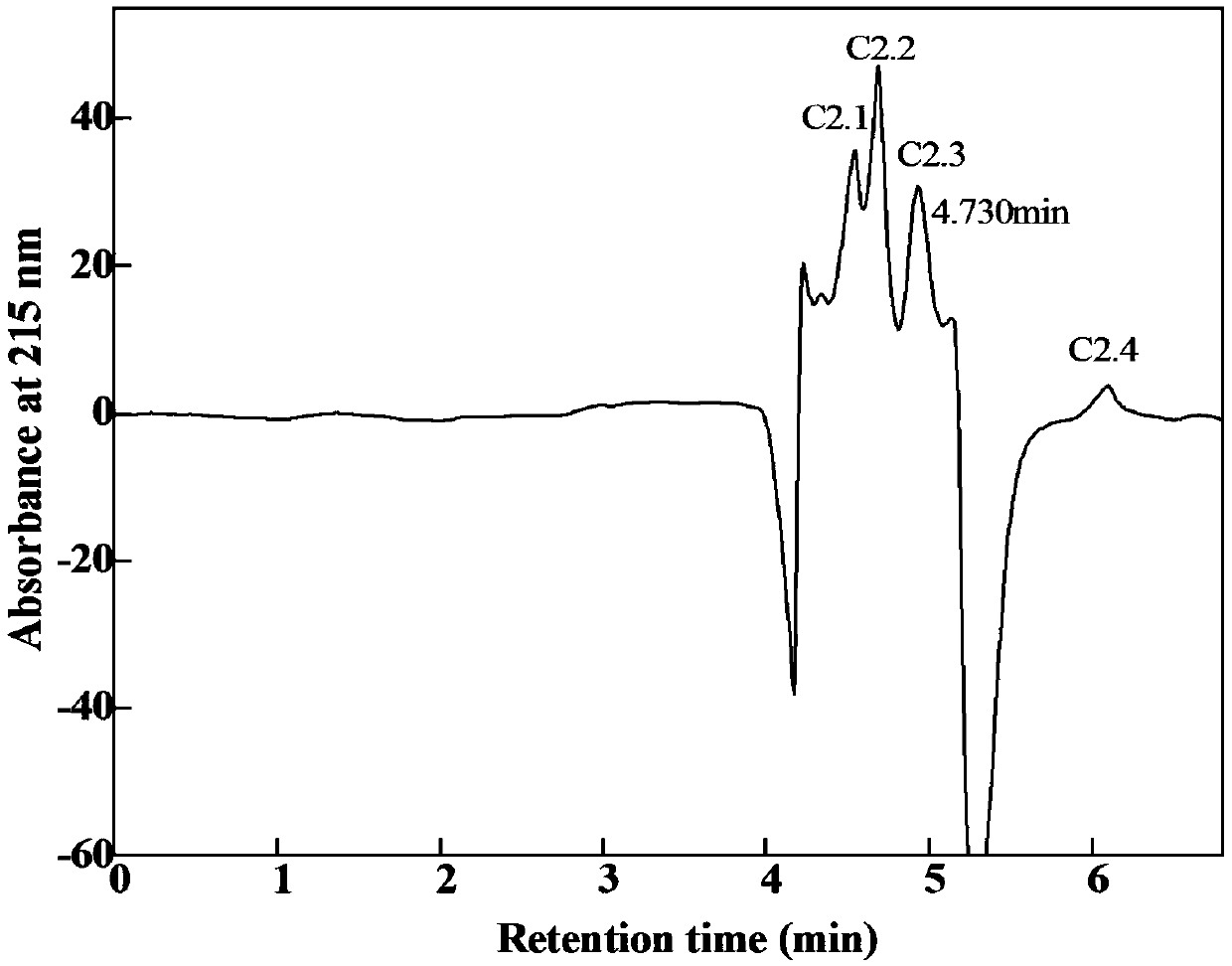Protein as well as separating method thereof and application thereof
A separation method and protein technology, applied in the field of vegetable protein separation, can solve the problems of low protein content, lack of scientific quantitative judgment, limited target plants, etc., to achieve the effect of ensuring purity
- Summary
- Abstract
- Description
- Claims
- Application Information
AI Technical Summary
Problems solved by technology
Method used
Image
Examples
Embodiment 1
[0038] Example 1 Separation and purification of substances that induce "get angry" in Wenzhou satsuma
[0039] 1. Extraction of total protein in Satsuma citrus pulp
[0040] Such as figure 1 As shown, pick fresh Wenzhou satsuma citrus fruit, manually peel off the white cortex outside the pulp. The homogenizer extracts the juice from the pulp, filters it with 4 layers of gauze to remove fat-soluble parts such as juice cells and other impurities, collects the filtrate and centrifuges (5000rpm, 15min, 4°C) to remove the residual filter residue. The collected supernatant is placed in a freeze dryer, freeze-dried to obtain a solid powder, and stored in an ultra-low temperature refrigerator for a long time.
[0041] Weigh 5g powder sample, add 5mL~7mL protein extraction buffer (containing 250mM sucrose, 20mM Tris, 10mM EGTA, 1mM PMSF, 1mM DTT, 1% TritonX-100 and Tris-HCl at pH=7.5) on ice Shake well for 10 minutes, fully shake for 20 minutes to make it evenly mixed, and the whole...
Embodiment 2
[0048] Example 2 Determining whether the isolated substance triggers an inflammatory phenomenon
[0049] After dialysis to remove inorganic salts, the four separation solutions were concentrated in a freeze dryer to obtain solid powder. The powder was dissolved in serum-free DMEM medium (Hyclone) to treat the macrophage cell line RAW264.7. The cells were subcultured on a 24-well plate, and after 1 day of adherent growth, different treatments were added. These treatments were the blank control group, that is, the serum-containing medium DMEM; the positive control, that is, the 1 μg / mL LPS treatment group; and then is 10 mg / mL of C2.1, C2.2, C2.3 and C2.4. After maintaining the growth for about 18 hours, the RNA of the treated cells was extracted with Trizol reagent. The up-regulated expression of the inflammatory factor cyclooxygenase-2 was detected by real-time PCR method, and the lipopolysaccharide LPS could significantly induce the expression of COX-2. C2.1, C2.2, C2.3 an...
Embodiment 3
[0056] Example 3 Determining Protein Peptides Using Mass Spectrometry
[0057] Collect C2.3 for identification. C2.3 was first collected and tested for purity by HPLC. Parameter conditions: The mobile phase is prepared by acetonitrile solution of 0.05% trifluoroacetic acid and aqueous solution of 0.1% trifluoroacetic acid at a volume ratio of 10:90; the temperature of the column oven is 30°C; the model of the C18 column is COSMOSILPACKED COLUMN 5C18-MS SIZE 10I D×250mm; instrument: dionex Ultimate3000. The DAD detector (ie photodiode array detector) scans the full wavelength to detect the purity. Finally, after in-gel enzymatic hydrolysis of Trypsin for 20 hours, peptide extraction, and Ziptip desalting treatment, the separated substances that can cause "inflammation" were detected by MALDI-TOF / TOF mass spectrometry, and their peptides were determined.
[0058] Use MALDI-TOF / TOF to detect and identify the peptides identified in the isolated substances as follows: 1)
[005...
PUM
| Property | Measurement | Unit |
|---|---|---|
| concentration | aaaaa | aaaaa |
Abstract
Description
Claims
Application Information
 Login to View More
Login to View More - R&D
- Intellectual Property
- Life Sciences
- Materials
- Tech Scout
- Unparalleled Data Quality
- Higher Quality Content
- 60% Fewer Hallucinations
Browse by: Latest US Patents, China's latest patents, Technical Efficacy Thesaurus, Application Domain, Technology Topic, Popular Technical Reports.
© 2025 PatSnap. All rights reserved.Legal|Privacy policy|Modern Slavery Act Transparency Statement|Sitemap|About US| Contact US: help@patsnap.com



